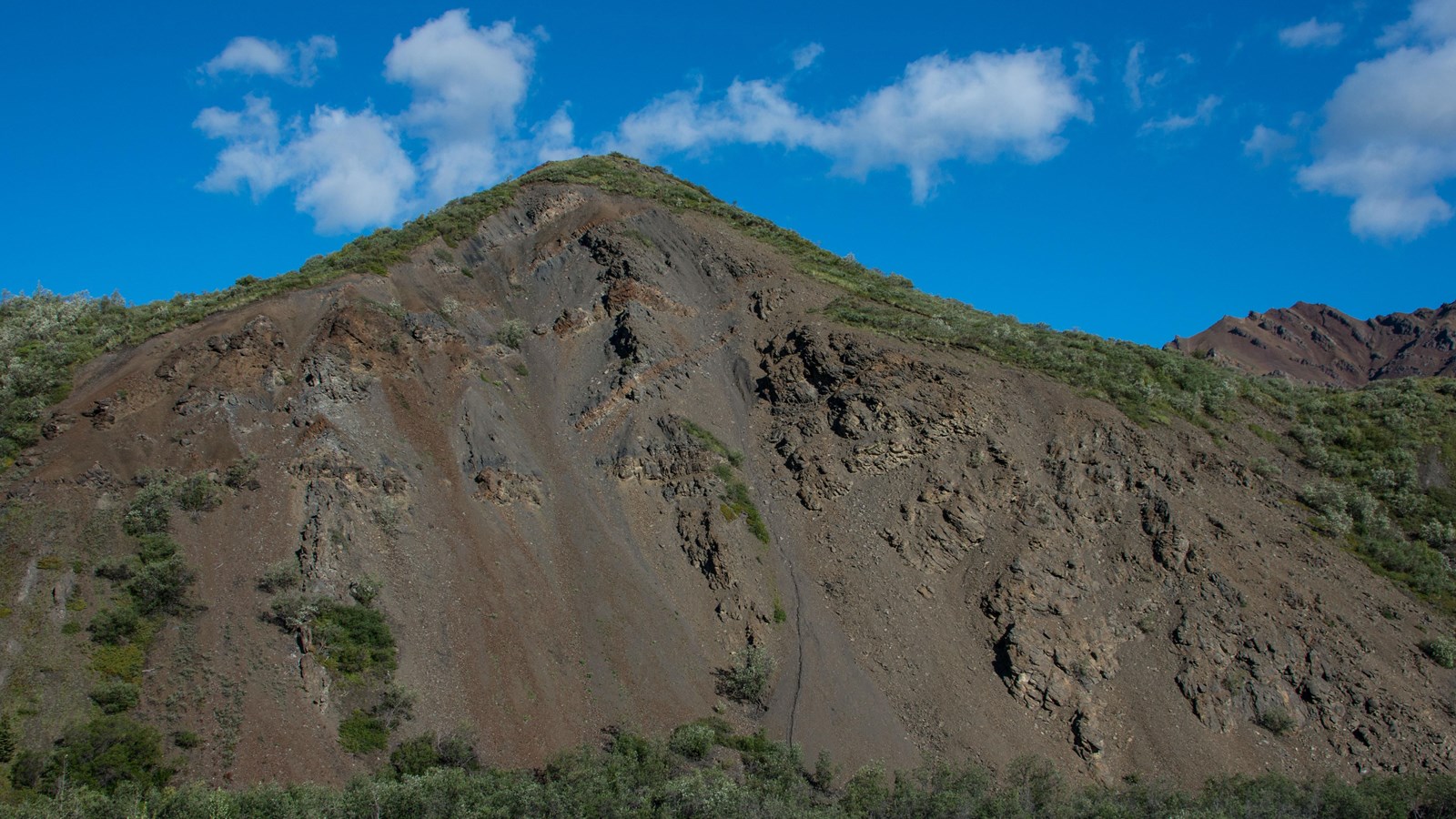Last updated: September 13, 2022
Place
Teklanika Dikes

NPS Photo
Quick Facts
Location:
Mile 35.6, Denali Park Road
Several intrusions of the igneous Teklanika Formation through the sedimentary Cantwell Formation can be seen on the northwestern side of the road at Mile 35.6. They appear as dark orangey-brown bands—dikes of cooled magma—cutting through the gray outcrop from the lower left to the upper right.
The typically gray rocks of the Cantwell Formation are often covered with vegetation in this area. The Teklanika Formation is younger and generally characterized by reddish- or yellow-brown-colored rocks. These two formations represent a very active time in Denali’s history, and their existence heavily influences the local topograhy and the difficulty of road maintenance.
Around 80 million years ago, plate tectonics crumpled this area and created the Cantwell Basin. Over the next 10 million years, nearly 2.5 miles (4 km) of cobbles, gravel, sand, and silt filled in this basin. The sediments solidified over time into the sedimentary rock now referred to as the Cantwell Formation. Then around 60 million years ago during the Paleocene Epoch, lavas began to intrude the Cantwell Formation, forming the dikes, sills, and lava flows of the Teklanika Formation. Over the next 5 million years, nearly 2 miles (~3 km) of volcanic rock accumulated on top of the Cantwell Formation, primarily as alternating layers of basalt-andesite and rhyolite lava each several hundred feet thick. The lavas are interspersed with pyroclastic flows and other materials ejected from volcanoes.
The typically gray rocks of the Cantwell Formation are often covered with vegetation in this area. The Teklanika Formation is younger and generally characterized by reddish- or yellow-brown-colored rocks. These two formations represent a very active time in Denali’s history, and their existence heavily influences the local topograhy and the difficulty of road maintenance.
Around 80 million years ago, plate tectonics crumpled this area and created the Cantwell Basin. Over the next 10 million years, nearly 2.5 miles (4 km) of cobbles, gravel, sand, and silt filled in this basin. The sediments solidified over time into the sedimentary rock now referred to as the Cantwell Formation. Then around 60 million years ago during the Paleocene Epoch, lavas began to intrude the Cantwell Formation, forming the dikes, sills, and lava flows of the Teklanika Formation. Over the next 5 million years, nearly 2 miles (~3 km) of volcanic rock accumulated on top of the Cantwell Formation, primarily as alternating layers of basalt-andesite and rhyolite lava each several hundred feet thick. The lavas are interspersed with pyroclastic flows and other materials ejected from volcanoes.
